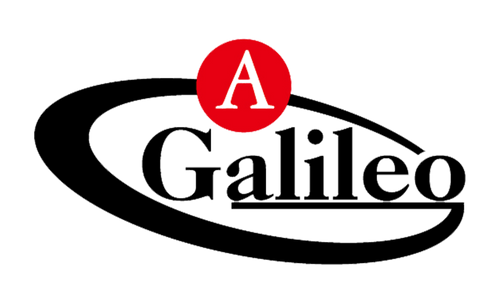Three factors determine how far you can hit a golf ball

Modern golf is a contest of distance, and the player who hits the farther ball wins first on the tee.
Ball speed has always been the core factor that determines the flight distance of the ball, which has attracted the attention of golfers at all levels. The speed of the ball directly affects the final landing point of the golf ball, so both amateurs and professional players are eager to know how far the ball can fly with the speed they can generate.
At a technical level, what factors are related to distance? What adjustments can be made to improve distance?

In this blog, Galileo sports - a global supplier of golf net and golf cage - will unpack the principle of hitting a golf ball far. Don’t worry, we’ve done our homework and are ready to spill the beans.
But hey, before we dive in, let’s take a moment to introduce three conditions for a long golf shot.
●Fast ball speed
●Suitable take-off angle
●Appropriate backspin
If you want to generate faster ball speed, you need to have faster club head speed and a sweet spot to hit the ball effectively.
And if you want to produce a suitable launch angle and spin, you need a suitable hitting angle, a suitable actual club face angle and a suitable hitting position (sweet spot).
Factors affecting ball speed
club head speed

Club head speed refers to the speed at which the club head moves during impact. Ball speed refers to the initial speed of the ball at the moment it leaves the club face after being struck by the club head.
According to Foresight, a service provider of golf shot monitoring products and simulated golf solutions, a ball traveling at approximately 100 mph should travel 159 to 169 yards. More common ball speeds, such as 130 mph and 140 mph, correspond to travel distances of 227 to 246 yards and 250 to 272 yards, respectively. To achieve longer hitting distances, such as 273 to 299 yards, ball speeds need to be 150 mph. And ball speeds of over 160 mph are key to achieving 300 yards of carry.
All other conditions being equal, the faster the club head speed, the faster the ball speed, and the farther the hitting distance; the slower the club head speed, the slower the ball speed, and the closer the hitting distance.
The top ten players on the PGA Tour in 2022 club head speed, Cameron Champ leads the list with an average of 124.89 mph
Batting position

When the ball hits the sweet spot, the energy from the clubhead is transferred to the ball in the most efficient manner.
When the hitting part of the club head deviates from the sweet spot, the club head will rotate to varying degrees at the moment of hitting the ball, resulting in incomplete energy transfer, resulting in a loss of hitting distance. In addition, the hitting position will also affect the distance of the hit through the gear effect.
When the ball hits the club face lower, the club head spins downward, and the ball spins more due to the gear effect. When the ball is hit on the upper side of the club face, the club head rotates upward, and the ball generates positive spin due to the gear effect.
The ball itself will have a lot of backspin due to the angle of impact and actual loft at impact. Therefore, the forward spin generated by the gear effect here will offset part of the back spin of the ball itself, resulting in a reduction in the actual back spin of the ball.
Factors affecting take-off angle
Batting angle
The hitting angle refers to the angle between the downward trajectory of the club head and the ground when hitting the ball.
When the hitting angle is steep, a large piece of turf will be scooped up after hitting the ball. Generally, the shorter the club, the steeper the hitting angle. When the hitting angle is flat, less turf will be scooped up after hitting the ball, or the turf will not be shoveled across the grass surface. Generally, the longer the club, the flatter the hitting angle. actual loft angle

Actual club loft refers to the angle between the club face and the vertical line on the ground at impact.
The ball's launch angle is between the actual club loft angle and the impact angle. When hitting the ball with a wood club, the ball's take-off angle is affected by the actual club face angle, which accounts for about 85%, and the impact angle accounts for about 15%; when the iron club hits the ball, it is affected by the actual club face angle, which accounts for about 75%. It is affected by the hitting angle accounting for about 25%.
Calculation method of actual launch angle: (actual club face angle - impact angle) * 25% = actual launch angle (actual club face angle minus offset degrees).
Factors affecting backspin
Backspin is caused by the friction between the clubface and the surface of the ball at an angle when hitting the ball.
The greater the angle difference, the greater the spin; the smaller the angle difference, the smaller the spin. In addition, spin is also related to club head speed. At the same angle difference, the faster the club head speed, the more back spin the ball will have.
Among the players we have seen, most of the players with low handicaps have steep hitting angles, small actual club face angles at the hitting position, and long hitting distances; conversely, most high handicap players have smooth hitting angles and actual club face angles. Big, hitting distance is shorter.
Rigorous data analysis of ball speed

How much ball speed is needed to achieve a 250-yard drive? According to Flightscope's analysis, a ball speed of approximately 140 mph is required to achieve this distance. But golfers also need the right tee conditions to match this, including an ideal launch angle of 10º to 14º and a spin rate of 2000 to 3000 rpm (revolutions per minute).
For golfers who dream of hitting 300-yard drives, ball speeds in excess of 160 mph are required, paired with an optimal launch angle of 10 to 14º and a spin rate of 1900 to 2900 rpm.
Last words
These data once again emphasize the importance of tee conditions in achieving maximum distance. Correct tee conditions can help golfers maximize their ball speed and achieve greater distance. So if you want to know how far a certain ball speed will travel, or how to achieve your desired distance, remember to pay attention to your tee conditions and make sure they match your ball speed for optimal flight and Drop point distance.
If you want to be the professional golfer, buy a galileo golf cage and put it in your backyard. I believe that if you keep practicing every day, one day, when you step on the golf course, you will wow everyone!
1 comentario

























































No mention of Clubhead mass.
According to your calculations a 1gm feather at 160 mph will send the ball 300yds ! (I think not!)
More simply, as i cant match Rory’s clubhead speed i can increase my clubhead mass (by increasing deadweight and shaft weight and length) to achieve the same ‘smash factor’ a Rory. I just need a club maker to help me put these factors into action